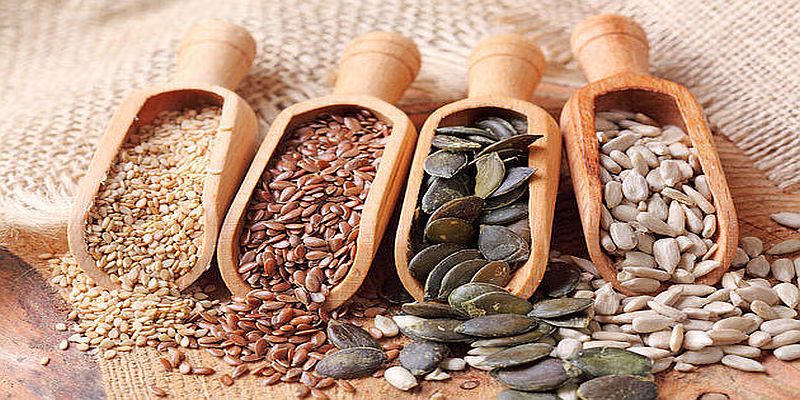The Secret Life of Seeds: Ancestral Whispers & Regenerative Revelations

A Masterpiece of Forgotten Wisdom for the Awakening Farmer
Long before seeds came in packets, they came in dreams. Before they were priced per kilogram, they were wrapped in song. The modern world teaches farmers to treat seeds as dead inputs lifeless shells that need fixing, coating, and control. But those who listen to the land know: every seed is a whisper from the past and a prophecy for the future.
Seeds remember droughts. Science now confirms what ancient farmers practiced without microscopes that seeds carry epigenetic memories of stress. If a plant survived flood, drought, or pest infestation, its offspring inherit those scars as strength. That’s why regenerative farmers are trained to save seeds from the last plant standing in a harsh season. Trophy yields mean little if the plant didn’t suffer and overcome. Ugly survivors are often the true ancestors of resilience. A seed saved through famine becomes a prophet for future hunger.
There’s language in seed shapes too not just beauty, but intention. Triangular seeds like buckwheat are nature’s chisels, piercing through compacted soils with pointed ease. Round seeds, such as beans, roll into cracks and crevices, hiding where moisture lingers after the sun is gone. Winged seeds like maple and moringa ask for wind they don’t want to be buried by hand. Scattering them fights nature’s plan. A seed’s form is its first prayer for the future.
Then there is moonlight. Ancients knew what modern research is just beginning to prove: seeds respond to lunar cycles. Soaking seeds in water charged under specific moon phases accelerates germination and growth. During the new moon, nightshades like tomatoes and peppers awaken. Under a full moon, grains and legumes draw in strength. The moon doesn’t rule the tides alone it stirs the sleep of seeds.
The soil also sings literally. Beneath the surface, mycorrhizal fungi emit low-frequency vibrations. These hums, inaudible to humans, signal to seeds that life is stirring nearby. In Zambia, elders used to hum to their seeds not out of ritual, but resonance. Today, we know playing forest sounds, birdsong, or gentle rain recordings during seed storage improves sprouting. A seed forgotten by song is a child raised without lullabies.
Even lightning has its role. Nitrogen-fixing pulses like lentils, beans, and clover evolved to awaken after electrical storms. Some Andean farmers place seeds near iron rods during lightning, believing it "charges" them. Today, regenerative farmers replicate this with electroculture passing low-voltage currents through seedbeds. What the lightning blesses, the soil celebrates.
In nature, ants are some of the greatest seed planters. Over 11,000 plant species rely on ants to carry and bury their seeds. These seeds grow fatty attachments elaiosomes to bribe the ants. If ants avoid your seeds, nature may be signaling weakness or imbalance. The ant’s labor is the seed’s destiny.
Seeds can even smell water. Through chemotaxis, seeds detect moisture gradients and send roots in the direction of life. Dryland farmers understood this. In arid regions, they buried clay pots beside their seeds, slowly releasing water underground and guiding root direction. Spiral planting patterns weren’t decorative they funneled dew. A seed’s roots are its nostrils sniffing out life.
Traditional seeds endure where hybrids fade. Commercial hybrids are often viable for just two or three seasons, weakening each year. But heirloom and indigenous seeds Ethiopian teff, Maya amaranth, Hopi maize remain viable for a hundred years or more when stored properly. Ash, charcoal, cow dung, clay pots these natural materials protect seeds from oxidation. A seed that cannot outlive its planter is a betrayal of time.
There is a law of return that every wild seed honors. Seeds give back. They drop leaves to build topsoil. They feed pollinators. They create habitat. But modern farming demands without offering. Agroecology restores balance by allowing 10% of every crop to go to seed not to harvest, but to honor the ecosystem. What the seed receives it must return. This is the oldest contract.
Always remember ......
Kneel to plant. Bow to harvest. The seed is the teacher and the land is the scripture.
If the children forget the seed, the land forgets the children.
A seed forgotten is a culture erased.
To save a seed is to say: we are not finished.
Every seed you save, every soil you honor, every tradition you remember it all forms part of the revolution against forgetting. Seeds are not inputs. They are ancestors. They are time travelers. They are sacred agreements between soil and sky.
Will this seed bless the children of my children’s children?
That, dear farmer, is the only question that truly matters.
By Dr. Brix
Agro-Ecology & Agribusiness Expert | Value Chain Specialist | Regenerative Agriculture Advocate
With over a decade of experience transforming agricultural systems across Southern Africa, I specialize in sustainable farming, agribusiness value chains, and regenerative agriculture. Let’s grow a resilient future together.
tziwa94@gmail.com
